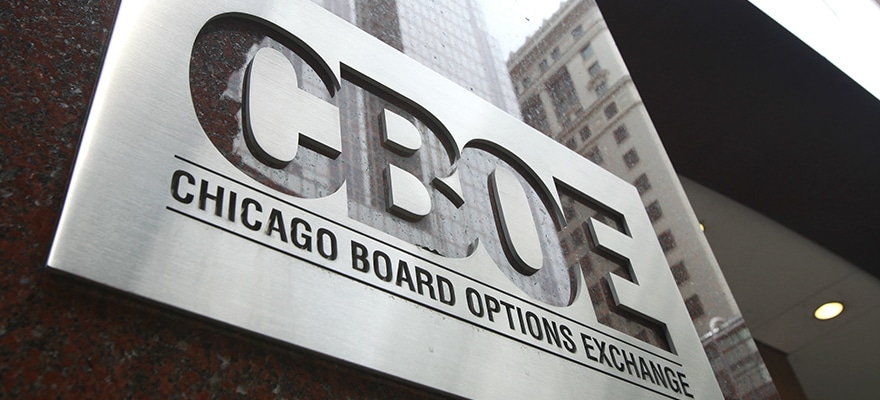Cboe Global Markets, Inc. (Cboe: CBOE | NASDAQ: CBOE) has just reported its trading volumes for the month ending September 2018, which saw a mixed performance in key business segments, according to a company statement.
During September 2018, Cboe disclosed a total trading volume for options contracts at 133 million, down 1.3 percent year-on-year from 135 million contracts back in September 2017. This corresponded to an average daily volume (ADV) of 7.0 million contracts per day, which was higher four percent year-on-year from 6.74 million contracts per day in the same month a year earlier.
Additionally, the figures illustrated a similar pattern at the Cboe over a monthly interval, which in terms of total ADV volumes during September 2018 marked a gain of three percent month-on-month from 6.81 million contracts in August 2018.
Across its futures business, Cboe Global’s total volumes came in at 4.5 million contracts in September 2018, decreasing by 20 percent over a yearly basis from 5.72 million contracts a year back. The figure also marks a drop by 21 percent month-on-month when compared with 5.82 million in August 2018. The Exchange yielded an average daily volume (ADV) of 241,000 contracts per day, which was lower by nearly 5 percent from 253,000 contracts in the previous month.
Cboe’s institutional spot FX platform saw its average daily trading volumes amounting to $35.7 billion in September 2018, up 2.6 percent month-over-month from $34.8 billion in August 2017.
Looking at its total volumes, Cboe FX inked a figure of $715 billion in September 2018, down 11 percent on a month-over-month basis from $802 billion in August 2018. In a different pattern, the figure was even higher by three percent year-over-year when weighed against $695 billion in September 2017.
September had been an active month, with Volatility benefiting from rising geopolitical tensions, concerns about US-led trade wars with several countries, and the prospect a global economic growth boom nearing its peak. Key currency pairs have departed its wait-and-see mode seen in July and August where they were stuck in narrow price ranges.
















